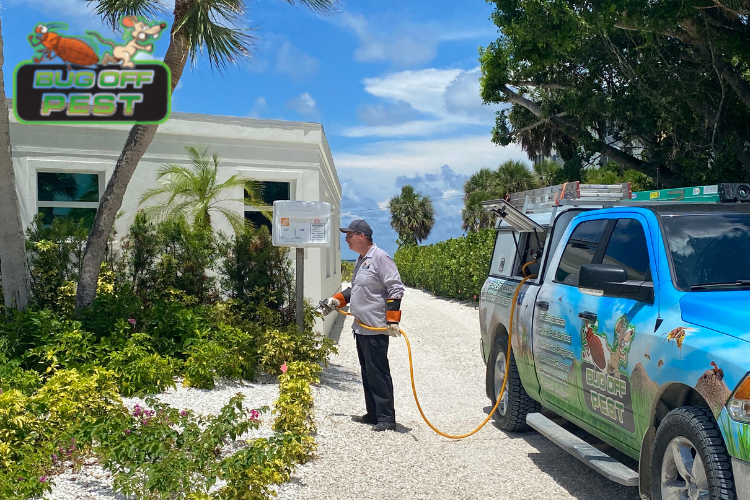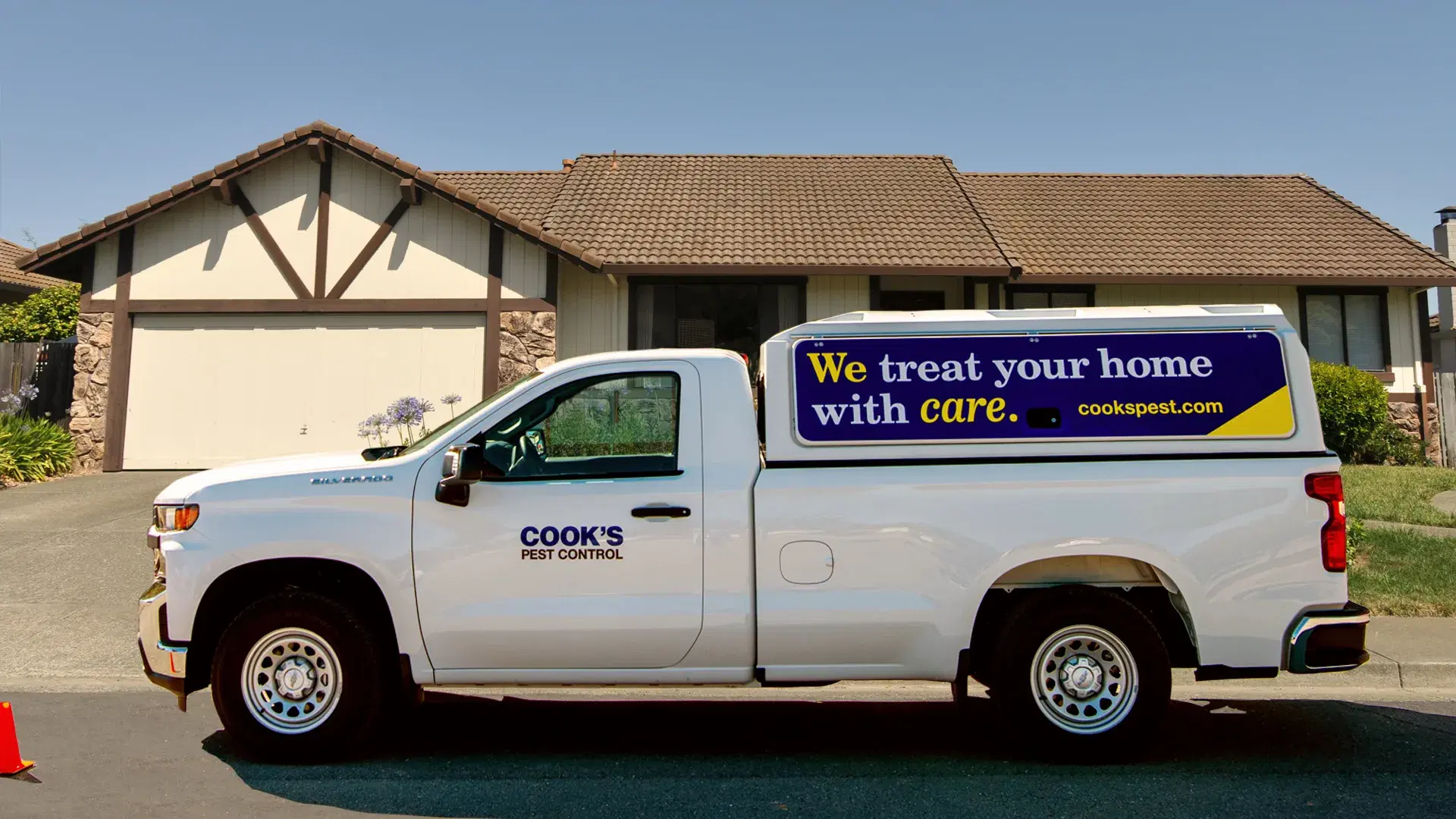Pest Control Services: Keeping Your Family Safe from Harmful Insects
Wiki Article
Find Out About the Latest Developments in Parasite Control and How to Carry Out Efficient Treatment Solutions
In current years, the field of pest control has seen substantial advancements, driven by the demand for sustainable and effective treatment services. Cutting-edge approaches such as Integrated Bug Management (IPM) incorporate environmentally friendly practices with advanced modern technology, boosting both efficacy and environmental obligation.Eco-Friendly Pest Control Options
Over the last few years, the demand for environment-friendly parasite control alternatives has actually surged as house owners and businesses alike look for lasting choices to conventional chemical treatments. This shift is driven by expanding environmental understanding and a desire to lessen the health and wellness threats related to artificial chemicals.

Environment-friendly parasite control approaches encompass a series of techniques that prioritize the usage of natural materials and techniques. Integrated Insect Management (IPM) is one such method, integrating organic, social, and mechanical techniques to manage pest populaces while lowering reliance on chemicals (Wildlife removal services). This all natural approach highlights avoidance through habitat control and the introduction of natural killers, therefore promoting a well balanced ecosystem
An additional prominent alternative is using agricultural pesticides originated from plants, which often tend to be much less hazardous to non-target microorganisms. Products like neem oil and diatomaceous planet have gotten traction for their effectiveness in controlling insects while presenting minimal dangers to human health and wellness and the atmosphere.
Furthermore, exclusion techniques, such as securing access factors and keeping sanitation, play an essential role in environmentally friendly insect management. By embracing these sustainable techniques, businesses and people can efficiently manage pests while advertising a much healthier world for future generations.
Smart Innovation in Insect Administration
Technology is improving the landscape of parasite management, with wise technology becoming a pivotal force in improving performance and performance - Wildlife removal services. The assimilation of Internet of Things (IoT) devices, artificial knowledge (AI), and information analytics is transforming how pest control specialists come close to infestations
Smart catches outfitted with sensing units can find pest activity in real-time, sending out instant alerts to drivers. This enables prompt feedbacks, minimizing damages and reducing the need for comprehensive therapies. Furthermore, AI formulas evaluate historic data to predict insect habits, making it possible for proactive interventions based upon environmental problems and problem patterns.
Drones and automated vehicles are additionally playing a considerable duty in pest monitoring, giving airborne evaluations of big areas, recognizing hotspots, and also distributing targeted therapies. These modern technologies not just enhance operations yet additionally improve safety and security by limiting human exposure to possibly dangerous chemicals.
Furthermore, mobile applications empower customers to monitor pest activity and gain access to expert advice, promoting a collaborative technique to pest management. In general, the fostering of smart innovation is establishing a brand-new standard in insect control, stressing data-driven decisions and sustainable practices that eventually profit both property owners and experts alike.
Integrated Pest Monitoring Strategies
Integrated Insect Administration (IPM) uses an all natural approach to pest control, combining numerous strategies to efficiently handle bug populaces while decreasing risks to human health and the environment. IPM rotates around recognizing the pest life process, their all-natural enemies, and the ecosystem in which they thrive.One of the fundamental elements of IPM is checking pest populaces via normal examinations and information collection. This permits the recognition of bug limits, determining when treatment is essential. Social techniques, such as plant turning, environment, and hygiene control, are necessary in minimizing pest occurrence and promoting plant health.
Mechanical controls, consisting of catches and barriers, are likewise crucial in IPM. These techniques can physically get rid of or prevent insects without making use of chemicals. When necessary, the judicious application of chemical controls is used, concentrating on targeted treatments that minimize ecological effect.
Education and cooperation among stakeholders, including farmers, pest control specialists, and the neighborhood, are essential for the effective application of IPM techniques. By focusing on lasting techniques, IPM not only addresses pest concerns however also cultivates a healthier ecosystem.
Biological Control Techniques
Many biological control approaches are progressively identified for their efficiency in managing bug populations while advertising ecological equilibrium. These techniques harness all-natural predators, bloodsuckers, and pathogens to minimize pest numbers without relying upon artificial chemicals. As an example, the intro of ladybugs can effectively manage aphid populations, while nematodes target soil-dwelling pest larvae.Furthermore, making use of microbial pesticides, such as Bacillus thuringiensis (Bt), gives an environmentally friendly alternative for handling caterpillar parasites. These products particularly target pest varieties, minimizing damage Ant exterminator near me to beneficial bugs and pollinators. In addition, preservation organic control highlights improving environments for natural opponents, such as birds and valuable pests, thus urging their presence in agricultural systems.
Research study proceeds to disclose innovative methods within this area, such as using scents to interfere with pest breeding patterns or the development of biocontrol representatives with genetic modification. Applying these approaches can lead to sustainable pest administration techniques that minimize the dependence on chemical treatments, inevitably cultivating much healthier ecosystems. As awareness of these methods expands, they are ending up being important elements of integrated insect administration (IPM) techniques, providing an equilibrium between efficient insect control and environmental stewardship.
DIY Parasite Control Solutions
As home owners look for effective ways to tackle pest concerns, do it yourself bug control options have gained appeal for their access and cost-effectiveness. These techniques equip individuals to resolve problems utilizing readily available materials and strategies, commonly without the requirement for professional treatment.
Additionally, preserving appropriate hygiene and routine inspections can stop insect entrance and nesting (Wildlife removal services). Straightforward techniques, such as securing splits, removing food resources, and decluttering, can considerably reduce parasite populaces. Catches, both homemade and commercially available, can likewise use reliable solutions for monitoring and controlling particular bugs like rats or bugs

Verdict
The assimilation of environmentally friendly bug control options, wise modern technology, and ingenious monitoring methods offers a thorough technique to efficient parasite administration. By accepting Integrated Parasite Management (IPM) and making use of organic control approaches, along with Do it yourself options, lasting and responsible pest control can be attained.Green insect control techniques incorporate a range of methods that focus on the usage of all-natural compounds and methods. Integrated Bug Monitoring (IPM) is one such approach, incorporating organic, social, and mechanical methods to take care of parasite populaces while lowering dependence on chemicals. As recognition of these strategies expands, they are ending up being integral components of incorporated bug administration (IPM) strategies, providing an equilibrium between effective insect control and environmental stewardship.
The integration of green bug control alternatives, smart modern technology, and ingenious administration methods offers a detailed approach to efficient pest monitoring. By accepting Integrated Parasite Administration (IPM) and making use of organic control techniques, together with DIY options, lasting and accountable pest control can be attained.
Report this wiki page